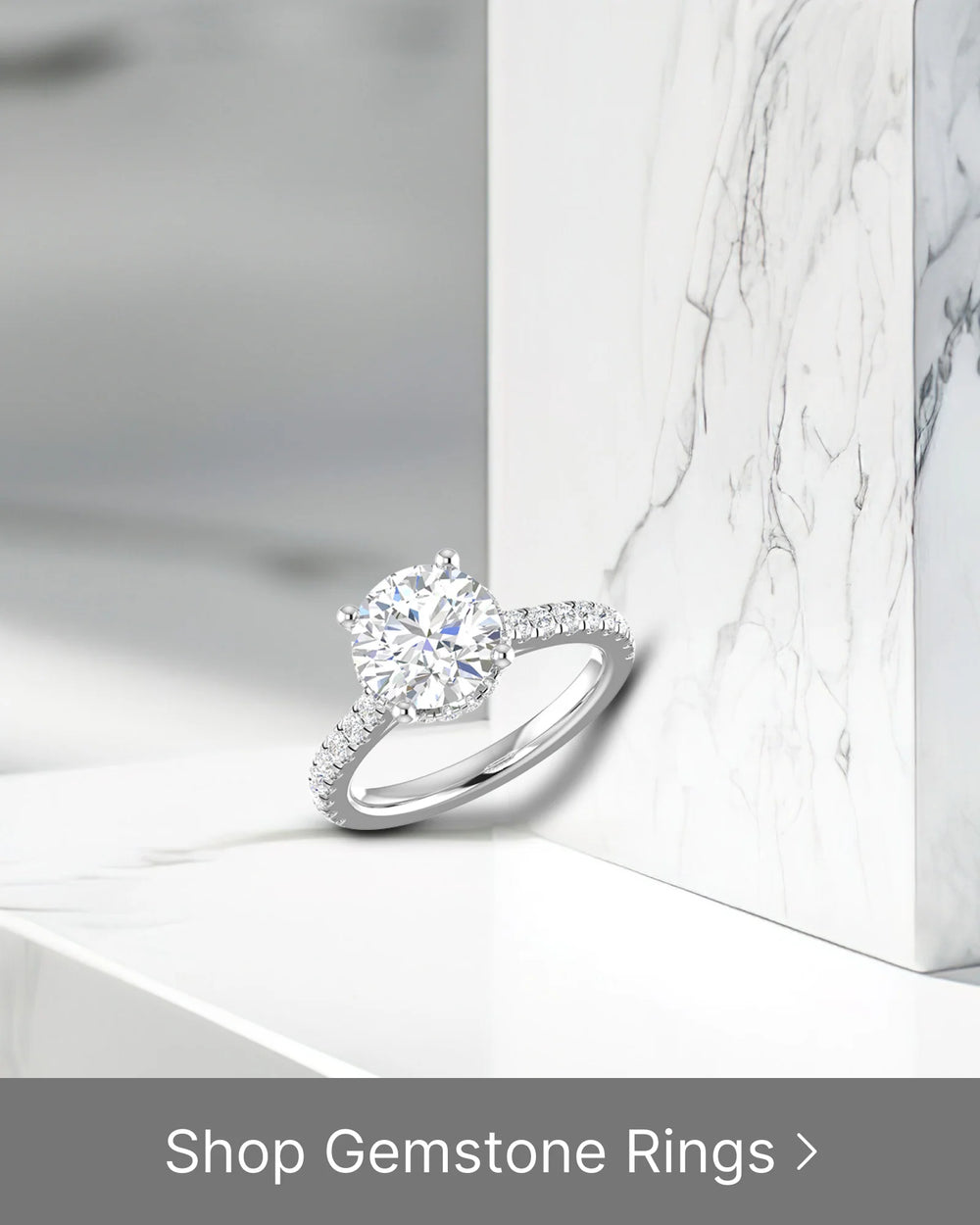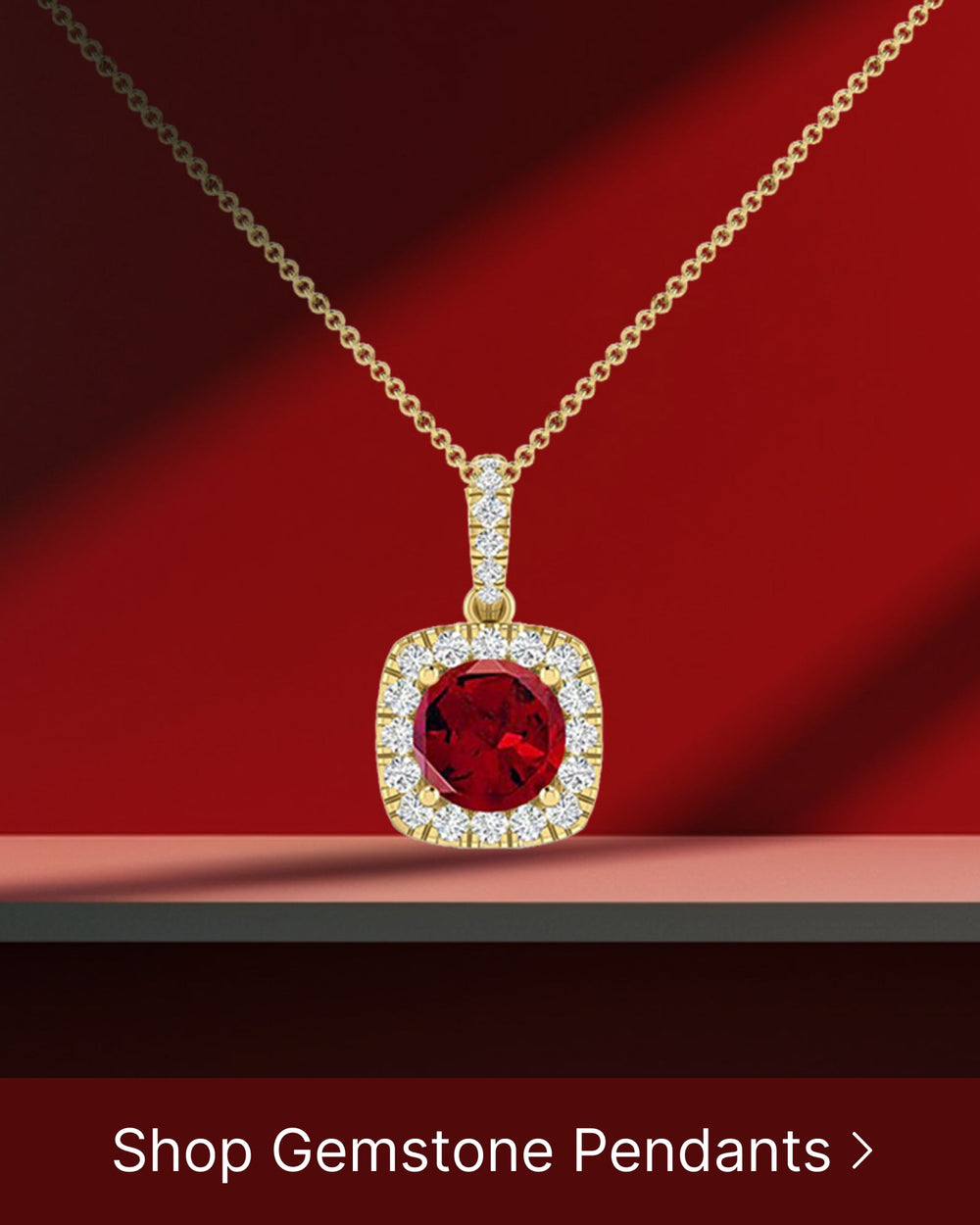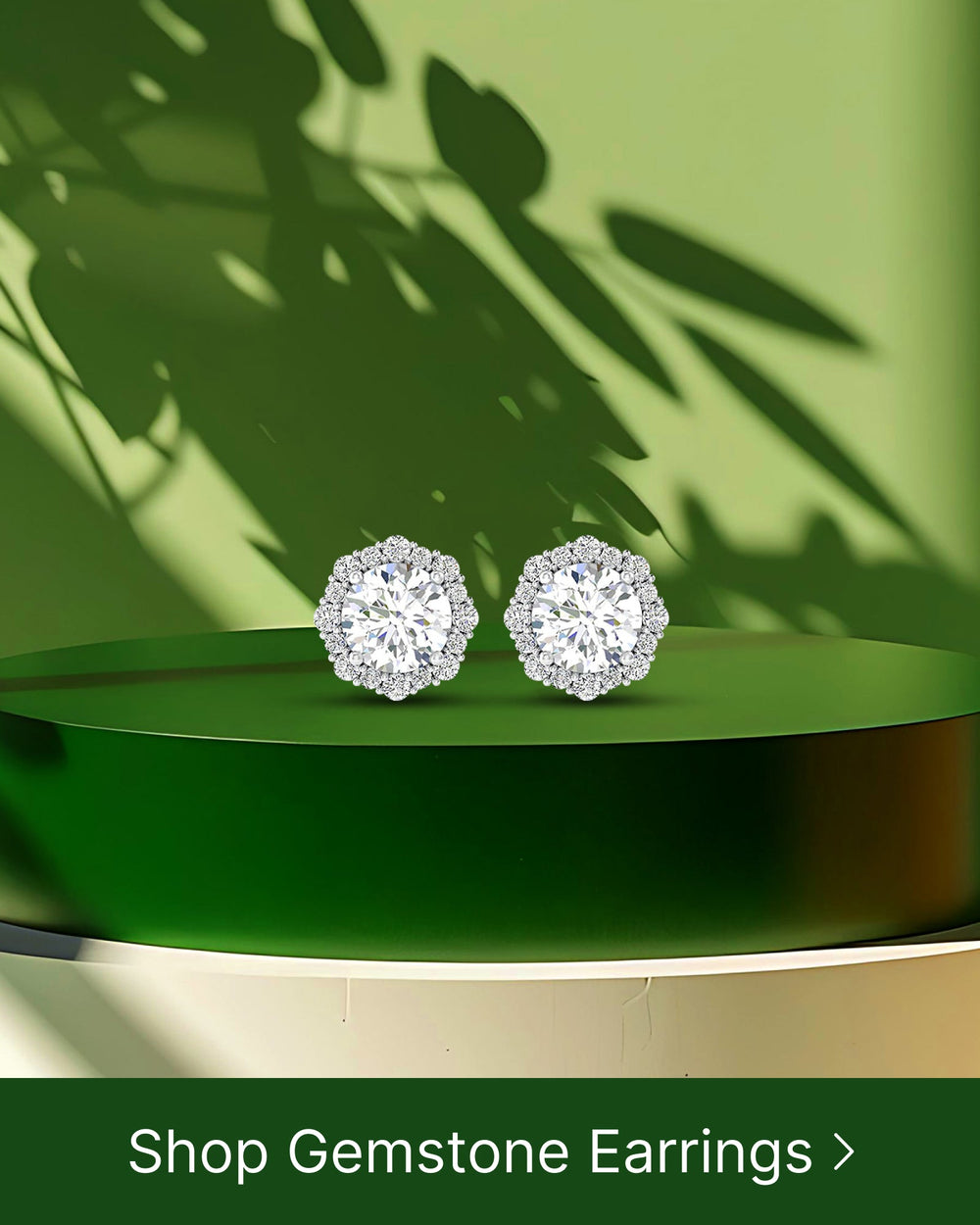When it comes to choosing the perfect metal for your jewelry, there are many factors to consider. Two popular options to explore are 18k white gold and platinum. These metals have distinct qualities and features that may make one a better choice for you than the other. In this article, we will compare the properties, value, hypoallergenic qualities, and maintenance requirements of these metals to help you make an informed decision. Let's dive deeper into the world of 18k white gold and platinum.
Understanding the Basics of 18k White Gold and Platinum
What is 18k White Gold?
18k white gold is an alloy composed of gold and other metals, such as nickel, zinc, and palladium. The "18k" refers to the purity of the gold, as it contains 75% gold and 25% other metals. The addition of white metals gives it a stunning silvery-white appearance.
When it comes to jewelry, 18k white gold is a popular choice due to its elegant and timeless look. It offers a beautiful alternative to traditional yellow gold, making it a versatile option for various styles and designs. The addition of other metals not only enhances its color but also increases its durability, making it suitable for everyday wear.
One of the advantages of 18k white gold is its hypoallergenic properties. While some individuals may have allergies or sensitivities to certain metals, 18k white gold is generally well-tolerated by most people. It is a great option for those with sensitive skin who want to enjoy the beauty of gold jewelry without any discomfort.
What is Platinum?
Platinum, on the other hand, is a naturally white metal that doesn't require any alloying. It is a rare and precious metal known for its durability and purity. Platinum jewelry is typically composed of 95% platinum and 5% other metals like iridium or ruthenium to enhance its strength.
Platinum has been used in jewelry making for centuries, and its popularity continues to grow. Its naturally white color doesn't fade or tarnish over time, making it a sought-after choice for engagement rings and other fine jewelry pieces. The high level of purity in platinum makes it an excellent choice for individuals with sensitive skin, as it is hypoallergenic and doesn't cause any irritation.
One of the unique characteristics of platinum is its density. It is significantly denser than other precious metals, giving it a substantial feel and weight. This density adds to its durability, making platinum jewelry highly resistant to wear and tear. It is a metal that can withstand the test of time, making it a valuable investment.
Another notable feature of platinum is its ability to develop a natural patina over time. Unlike other metals that may require regular polishing to maintain their luster, platinum develops a unique, satin-like finish known as a patina. This patina adds to the charm and character of platinum jewelry, giving it an antique and vintage appeal.
The Physical Properties of 18k White Gold and Platinum
Durability and Hardness
In terms of durability, platinum takes the lead. It is known for its exceptional strength and resistance to wear and tear. Platinum jewelry can withstand daily wear and retain its shape over time. This remarkable durability is due to platinum's high density and strong molecular structure, which make it highly resistant to scratches and dents. In fact, platinum is so durable that it is often used in industrial applications, such as in the construction of aircraft engines and electrical contacts.
On the other hand, 18k white gold, although durable, is slightly softer than platinum. This means that over long periods of time, 18k white gold jewelry may show signs of wear, such as minor scratches or dents. However, with proper care and maintenance, both platinum and 18k white gold can maintain their beauty for years, making them excellent choices for heirloom pieces that can be passed down through generations.
Color and Shine
When it comes to color, platinum possesses a naturally white hue that doesn't fade or tarnish. This inherent whiteness is one of the reasons why platinum is highly sought after for jewelry. It not only complements various skin tones but also enhances the brilliance of diamonds and gemstones. The pure white color of platinum allows the stones to stand out, creating a stunning visual impact.
On the other hand, 18k white gold has a slightly yellowish tint, which is masked by rhodium plating. Rhodium is a precious metal that is part of the platinum family. It is used to give 18k white gold jewelry a bright white appearance similar to platinum. However, over time, the rhodium plating may wear off, revealing the natural color of white gold. This is a normal occurrence and can easily be remedied by re-plating the jewelry, restoring its original lustrous shine.
Weight and Density
Platinum is heavier and denser than 18k white gold, giving it a substantial feel on the fingers or neck. This added weight is often preferred by those who appreciate the luxurious sensation of wearing high-quality jewelry. The weight of platinum not only adds to its durability but also gives it a sense of prestige and exclusivity. It is a metal that exudes elegance and sophistication.
On the other hand, 18k white gold, being lighter, is a more comfortable option for those seeking a lighter piece of jewelry. The lighter weight of white gold makes it easier to wear for extended periods without causing any discomfort. This makes it a popular choice for everyday jewelry, where comfort is a priority.
Despite their differences in weight and density, both platinum and 18k white gold offer unique qualities that make them highly desirable metals for jewelry. Whether you prefer the durability and timeless elegance of platinum or the lighter weight and versatility of 18k white gold, both metals can be crafted into exquisite pieces that will be cherished for a lifetime.
The Value of 18k White Gold and Platinum
Market Prices
Platinum is generally more expensive than 18k white gold due to its rarity and higher purity. The price of platinum fluctuates based on market conditions, making it a premium choice for those seeking an investment piece. Alternatively, 18k white gold offers a more affordable option without compromising on beauty.
Resale Value
When it comes to resale value, platinum holds its worth over time. Its rarity and enduring qualities make it highly desirable among collectors and buyers. 18k white gold also maintains a good resale value, but it may not possess the same allure as platinum in the eyes of some buyers.
Hypoallergenic Qualities of 18k White Gold and Platinum
Allergies to certain metals can be a concern for some individuals. This is where platinum has an advantage. Platinum is hypoallergenic, making it an excellent choice for those with sensitive skin. 18k white gold, on the other hand, may contain nickel or other metals that can cause reactions in some individuals. To avoid any potential allergies, choose nickel-free 18k white gold or opt for platinum.
Maintenance and Care for 18k White Gold and Platinum Jewelry
Cleaning and Polishing
To maintain the beauty of both 18k white gold and platinum jewelry, regular cleaning and polishing are essential. Use mild soap, warm water, and a soft brush to clean your jewelry. For 18k white gold, periodic rhodium plating may be required to restore its bright white appearance. Platinum, on the other hand, only needs routine cleaning to preserve its natural luster.
Scratches and Wear
Both 18k white gold and platinum can develop scratches over time due to regular use. However, the difference lies in how they react to wear. Platinum develops a natural patina known as a "vintage" look, which some individuals adore. 18k white gold, on the other hand, may require professional polishing to remove scratches and maintain its original shine.
Making the Right Choice: 18k White Gold vs Platinum
Consider Your Lifestyle
When choosing between these two metals, consider your lifestyle and daily activities. If you lead an active lifestyle with frequent exposure to rough surfaces or harsh chemicals, platinum's durability makes it an excellent choice. Alternatively, if you prefer a lighter piece and don't mind occasional maintenance, 18k white gold can be an equally stunning option.
Think About Your Budget
Your budget is also an important factor in your decision-making process. If you have a higher budget and are looking for a long-term investment piece, platinum may be the metal of choice. For those seeking an exquisite look at a more affordable price point, 18k white gold provides an excellent alternative.
Reflect on Your Personal Style
Ultimately, your personal style and preference play a significant role in deciding which metal suits you best. Do you prefer the classic white shine of platinum, or does the slightly warmer hue of 18k white gold appeal to you? Take your time to explore different options and try on jewelry pieces to see which metal resonates with your unique style.
When it comes to choosing between 18k white gold and platinum, there is no definitive "better" choice. Both metals have their own distinct qualities and beauty. Consider the properties, value, hypoallergenic qualities, and maintenance requirements outlined in this article. Use this information to make an informed decision and select the metal that aligns with your preferences and lifestyle. Whether you choose the understated elegance of platinum or the affordable luxury of 18k white gold, your jewelry is sure to shine brilliantly for years to come.






